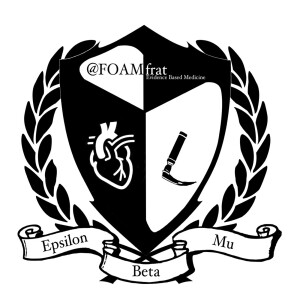
Podcast 162 - Multimodal Pain Management w/ Shane O' Donnell
 2023-09-29
2023-09-29
Download
Right click and do "save link as"
When I became a paramedic, being able to provide pain management was one of the "new interventions" that I looked forward to most. As an EMT, I remember countless times I was without ALS resources and had to watch a patient suffering in pain until we got to the hospital. Trying to obtain any history or perform an assessment on someone writhing in pain can be nearly impossible. As a BLS provider, I would attempt non-pharmacological ways to relieve pain, such as ice packs, warm packs, elevating extremities, and sometimes simply trying to distract them with conversation. While these methods should not be discounted, I will never forget the first time I could provide pain medication to an elderly woman who fell and fractured her hip. I started an IV right there on the floor of the assisted living facility, administered some fentanyl, and comfortably got her to the stretcher. Analgesia did not save this lady's life. Still, it did make her trip to the hospital a little more comfortable and allowed me to obtain an accurate history, including the dizziness and dyspnea she felt before falling.
Performing an adequate assessment and obtaining pertinent medical history can be difficult when a patient is experiencing intense pain. For this reason, pain should be managed to a level that allows for comfort & communication. Total pain relief is ideal but may not always be feasible, given hemodynamics and underlying causes.
Check out this episode with Tyler & Shane as they discuss multimodal pain management strategies.
More Episodes
Podcast 167 - Placenta Previa w- Demi Wilkes
 2024-05-06
2024-05-06
 2024-05-06
2024-05-06
Podcast 161 - EMT Pharmacology
 2023-08-18
2023-08-18
 2023-08-18
2023-08-18
0123456789101113141516171819
Create your
podcast in
minutes
- Full-featured podcast site
- Unlimited storage and bandwidth
- Comprehensive podcast stats
- Distribute to Apple Podcasts, Spotify, and more
- Make money with your podcast
It is Free
- Privacy Policy
- Cookie Policy
- Terms of Use
- Consent Preferences
- Copyright © 2015-2024 Podbean.com




